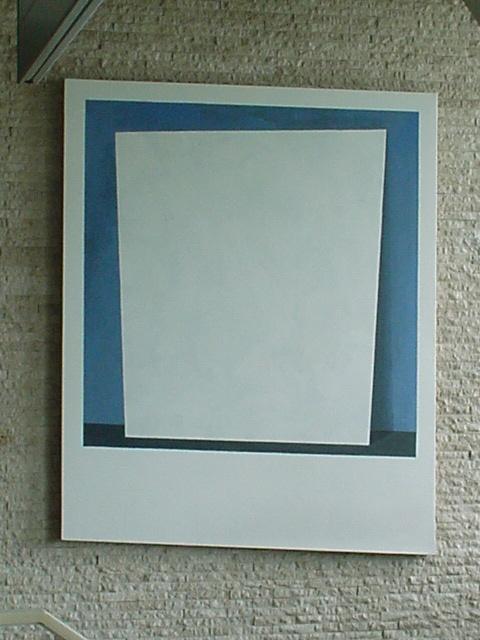JCJ Van der Heyden en Theo Mols
Unity in Diversity (1979, paintings)
Koopmans Building

J.C.J. (Jacques) van der Heyden (1928-2012) was the first Dutch artist to work with new media. He became known, among other things, for his experiments with photocopiers. He was trained as a painter, but shifted his attention in the turbulent 1960s (in which, for example, the first university occupation of the Netherlands took place at Tilburg University) to new media: film, video, television, and sound. Later he combined these media again with traditional painting and would continue to do so until his death.
The works that Van der Heijden placed in 1978 were purchased by the university on the construction of Koopmans Building. That had already opened in 1971, but it took a long time for the various stakeholders to agree on the art in the building. The works were meant for "identification," to accentuate the differences between the floors—the scientific disciplines—of the building. After all, for example, an econometrician is very different from a business economist. Van der Heyden was not given a specific assignment, but was possibly approached because his work is almost always about observation and the reflection on observation. In observation, you make choices—what do you consider important, and what less so—and then you interpret what is observed. This selection process is necessary to distill things of significance from the multitude of information.
JCJ van der Heyden tried to capture the complexity of reality in a simple image. line were extremely important to him. Draw a circle and you already have two forms: the circle and the space outside it. Draw a horizontal line and you soon think of a horizon, the separation between heaven and earth. In short, a wealth of images can be evoked through simple lines. Van der Heyden had an inquiring mind and drew or photographed the horizon from an airplane, and then it is convex, vertical, or sloping. Never straight. So it is a matter of perspective, of where you stand and where you are. His attention to the small—and therefore to the large—opened many people's eyes to the power of the concentrated look at what we call reality. JCJ Van der Heyden was a much sought-after lecturer, whose work is included in several museums and important private collections. In 1989, he received the David Röell Prize.
The stairwells contain not only works by Van der Heijden, but also by the Tilburg artist Theo Mols. Theo Mols applied various monumental wall decorations in Tilburg, often—as was the case at the university—abstract in nature. His work reinforced the idea behind the art project in the Koopmans Building: unity in diversity.
More about history and academic heritage
The Tilburg University academic heritage is a very diverse set of archives, visual materials, collections, devices, recorded stories, et cetera that relate to the history of the university.